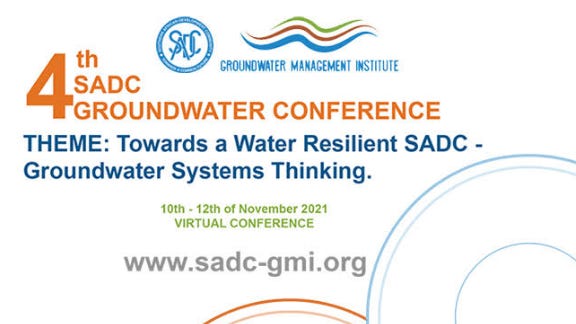
An Opinion: Optimizing sustainable groundwater management calls for a system thinking approach
“The Systems thinking approach could innovatively contribute to a water-secure SADC region to mitigate the acerbating impacts of climate change”.
“The Systems thinking approach could innovatively contribute to a water-secure SADC region to mitigate the acerbating impacts of climate change”. This view is shared by Engineer James Sauramba, SADC-GMI Executive Director.
Diplomacy & Science News 2019 also indicates that if sustainable water resources management is the ultimate, a transdisciplinary approach which advocates for the conjunctive use of both groundwater and surface water is required.
It is a well-known fact that water is a finite resource. To meet water demands of the ever-growing SADC population, the water community needs to constantly look for innovative approaches to ensure that the region is water and food secure considering the worsening climate change scenarios that are currently immersing the region and the globe at large.
As the surface water resources dwindle, millions of people turn to groundwater as their primary source of water for agricultural, industrial and domestic use. This alone adds pressure to an already scarce resource.
Eng Sauramba says research indicates that over 70% of the 280 million people living in the SADC region rely on groundwater as their primary source of water. In most cases, especially in the rural areas, Groundwater is the only resource that saves the population to sustain their livelihoods and from a total halt of their social and economic development. With so much demand placed upon groundwater resources, the holistically management of the resource becomes key.
Eng Sauramba continues to say that to achieve a water resilient SADC region, there is an urgent need to embrace and apply holistic approaches to water resources management, starting from the planning to implementation of the interventions.
One of the key objectives of the upcoming conference is to enhance the community of practice amongst the groundwater practitioners and allow them to talk about this water resource, that is underground, invisible, and yet indispensable. The conference will also allow participants to share the emerging issues and innovations currently used in the conjunctive use of both groundwater and surface water to combat the growing impacts of climate change.
The 4th SADC Groundwater Conference brings to prominence groundwater Systems thinking as one of the key approaches in achieving a water resilient SADC, hence the focus of this year’s theme. The conference is further divided into three sub-themes: (i) Groundwater, an Integral part of the hydrological system, (ii) Communities, institutions, capacity, and local-level governance, and (iii) Deriving benefits from the groundwater system, Innovative groundwater infrastructure interventions. Topics under these three sub-themes will demonstrate how various components in groundwater management work together holistically to achieve the sustainable development of water resources.
Systems thinking provides an opportunity to understand how groundwater systems function and react to anthropogenic influences, thereby enhancing its contribution to water security. Applying the systems approach to water management can assist us manage the complexity of the resource and provide a structured way of thinking about the whole system rather than its parts, and about connections rather than just content.
Systems thinking to groundwater resources management comes with a large set of mathematical formalities for addressing systems in a rigorous way and it offers us an innovative toolkit of techniques relevant for studying nexus problems, including systems dynamics, integrated assessment, simulation, and modelling, and many more.
The impact of climate change-induced severe weather events such as droughts and floods, and changes in rainfall patterns are starting to have visible and devastating effects on water and food security. A 2011 study, for instance, revealed that 12 of the 16 SADC Member States are directly and periodically affected by drought events, increasing the pressure on Southern Africa’s already dwindling lakes and rivers. Such occurrences justify the important need to sustainably manage both groundwater and surface water conjunctively. In most cases, we turn to groundwater when we are already in crises. As water custodians in the region, we need to be proactive in our planning, and collaboration from all stakeholders is of paramount importance.
The water resources systems approach today offers a scientific interdisciplinary context for dealing with the complex practical issues of water management and prediction of the water resources future.
Agriculture, the most important economic activity in the SADC region, draws an estimated 20 percent of its water from groundwater - a precious resource that often helps farmers to survive dry seasons, particularly in more arid south-western areas.
Today, more than ever, we need appropriate tools that can assist in dealing with the challenges introduced by the increase in the complexity of water resource problems, consideration of environmental impacts, and the introduction of principles of sustainability.
In the complex environment, we find ourselves in, the system thinking approach promises to offer a scientific interdisciplinary context for dealing with complex practical issues of water management and prediction for the future. It also assists decision-makers to make better decisions for sustainable water management to sustain livelihoods and socio-economic development.
This Opinion piece has been put together by Engineer James Sauramba, SADC-GMI Executive Director and Thokozani Dlamini, SADC-GMI Communications and Knowledge Management Specialist









